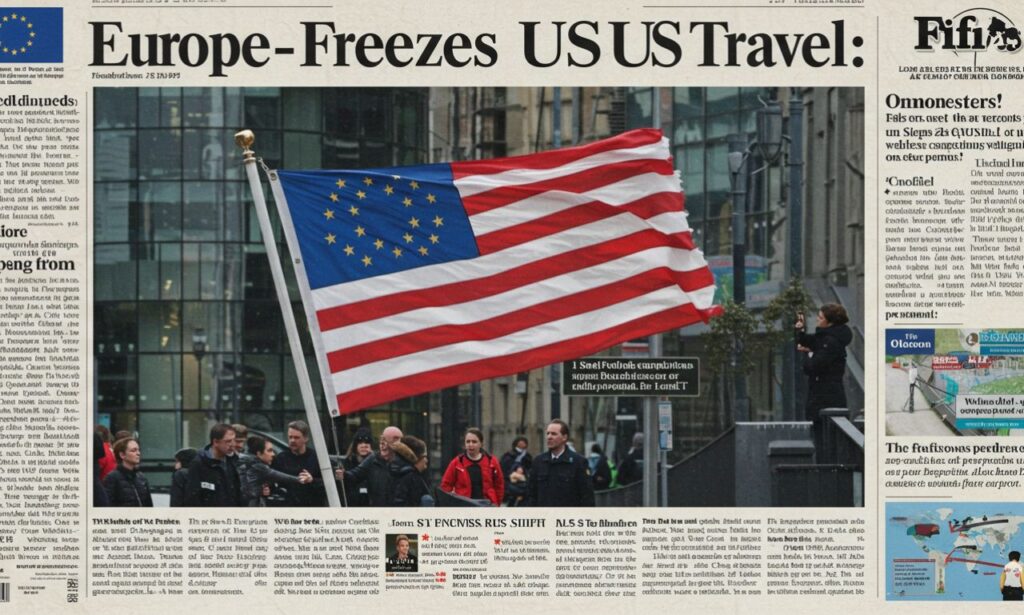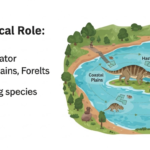In 2025, a dramatic change rippled through the global travel landscape: Europe freezes US travel—a trend driven by policy shifts, diplomatic strains, security concerns, and traveler sentiment. This freeze is not a literal ban, but rather a sharp decline in European citizens’ interest in traveling to the United States. While some regulatory changes are in place, the broader picture is shaped by evolving social, economic, and political factors.
With American cities once seen as top bucket-list destinations, why are Europeans suddenly staying away?
Europe Freezes US Travel: The Numbers Tell the Story
The decline is significant. Recent travel data shows that European outbound travel to the U.S. has dropped by over 17% in 2025 alone. Countries like Germany, Spain, France, and the UK reported steep reductions in American-bound flights and hotel bookings. Spain led the trend, registering a 25% drop, while Germany followed with 28% fewer transatlantic departures.
Meanwhile, intra-European travel is booming. Over 70% of Europeans now favor traveling within the continent, citing affordability, cultural familiarity, and convenience as key reasons. Simply put, Europe’s residents are choosing to stay local—effectively freezing their once-strong interest in U.S. trips.
Europe Freezes US Travel: Reasons Behind the Trend
Strained Diplomatic Relations
Growing political divides and geopolitical tensions have played a huge role. Several European nations have expressed concerns over visa denials, unpredictable customs checks, and America’s fluctuating foreign policies. These diplomatic rifts have made transatlantic travel less attractive for both tourists and business travelers.
Stringent Border Controls
Recent stories of European tourists being detained or denied entry due to administrative oversights have gone viral, sparking fear and uncertainty. Enhanced screening protocols—though aimed at national security—have inadvertently discouraged many casual travelers.
Visa and Entry Barriers
Although visa-free travel exists for most EU citizens, the introduction of new systems like the Entry/Exit System (EES) and the upcoming ETIAS (European Travel Information and Authorization System) has raised reciprocal concerns. These digital entry checks for non-citizens entering Europe have prompted U.S. to explore tougher entry requirements for Europeans as well.
Europe Freezes US Travel: The Rise of Regional Tourism
As long-haul travel to the U.S. declines, Europe is seeing a golden age of domestic exploration. From Croatia’s beaches to Portugal’s wine valleys, regional travel is thriving.
-
Southern Europe (Spain, Italy, Greece) is enjoying record numbers of intra-European visitors.
-
Eastern Europe is attracting digital nomads and budget-conscious travelers with its affordability and improved infrastructure.
-
Nordic nations are also seeing increased eco-tourism driven by climate-conscious travelers.
This redirection of tourism supports local economies while further diminishing the demand for American travel.
Europe Freezes US Travel: Who Is Most Affected?
Airlines and Travel Agencies
Transatlantic carriers are feeling the pinch. Lufthansa, Air France, and British Airways have all reduced flight frequencies to American hubs. Travel agencies that once specialized in U.S. holidays are rebranding toward European-centric experiences.
U.S. Tourism Sector
Major cities like New York, Los Angeles, Miami, and Chicago have reported visible declines in European tourism, impacting hotels, restaurants, and retail outlets.
Students and Cultural Exchange Programs
Visa delays and changing immigration rules have disrupted academic and cultural programs. European students and artists once eager to study or perform in the U.S. are now opting for countries like Canada, Australia, and even South Korea.
Europe Freezes US Travel: Upcoming Entry Systems Explained
ETIAS – Coming Late 2026
The European Travel Information and Authorization System (ETIAS) will require U.S. citizens to register online before visiting the EU. The fee is €20, and approval may take up to 30 days. Though not a visa, it’s a mandatory pre-clearance system that echoes the U.S.’s ESTA process.
EES – Starts October 2025
The Entry/Exit System replaces physical passport stamps with biometric scanning (fingerprints and facial recognition) at EU borders. It’s designed to improve border security and reduce overstays, but it introduces a layer of complexity for all non-EU travelers.
These systems are part of the reason the U.S. is tightening its own policies in response, creating a feedback loop of regulatory friction.
Europe Freezes US Travel: Public Sentiment Shifting
Social media tells the story: hashtags like #StayInEurope and #SkipTheUS trend among European travelers. Forums are filled with discussions on safety, costs, and ethics of visiting the U.S. Many cite gun violence, healthcare costs, and political polarization as reasons to look elsewhere.
At the same time, influencers and travel bloggers are amplifying the beauty and diversity of local European destinations, creating a powerful narrative shift.
Europe Freezes US Travel: Are Americans Still Welcome in Europe?
Despite reciprocity concerns, the EU has not banned U.S. travelers. However, some countries—like Sweden, Bulgaria, and Norway—have imposed temporary restrictions or advisories against non-essential U.S. travel, especially for unvaccinated travelers.
In most EU nations, fully vaccinated and ETIAS-cleared American travelers can still enter. That said, the process is more scrutinized and regulated than ever.
Europe Freezes US Travel: Impact on Future Tourism
This shift could have long-term consequences. If the freeze continues through 2026, U.S. tourism might permanently lose a sizable share of its European visitor base. Businesses dependent on high-spending European tourists—luxury hotels, fashion outlets, Broadway shows—may struggle to recover.
On the flip side, Europe is boosting its own tourism economy, investing in sustainability, heritage preservation, and modern transport systems to accommodate increased regional travel.
Europe Freezes US Travel: Could It Be Reversed?
Yes—but only through mutual policy reforms, smoother visa systems, and rebuilt trust. Diplomatic dialogue is critical. U.S. and EU leaders must address:
-
Simplifying entry requirements.
-
Ending arbitrary visa denials.
-
Coordinating pandemic responses.
-
Promoting cultural diplomacy.
Rebuilding goodwill between the continents could re-open the gates—but it will take time, and likely, a change in public and political sentiment.
Conclusion
The phrase “Europe freezes US travel” captures more than just a statistical dip—it reflects a profound transformation in transatlantic travel behavior. Whether driven by policy, perception, or practicality, the decline in European travel to the U.S. signals a need for recalibration on both sides of the Atlantic. For now, Europeans are content exploring the charm of their own continent, while the U.S. rethinks how to remain a welcoming destination in an increasingly complex world.







